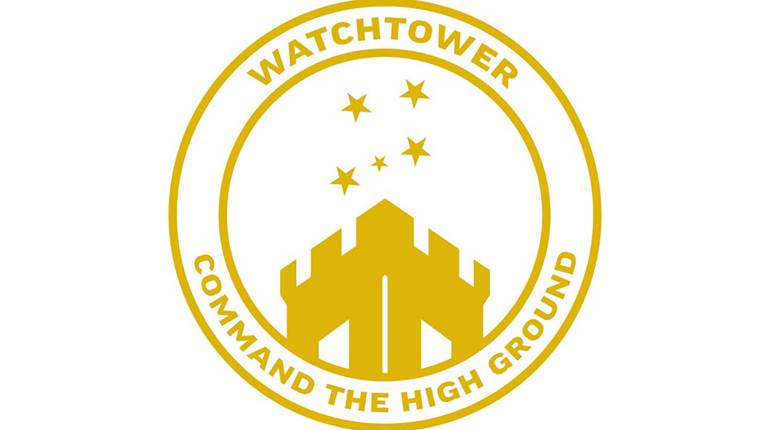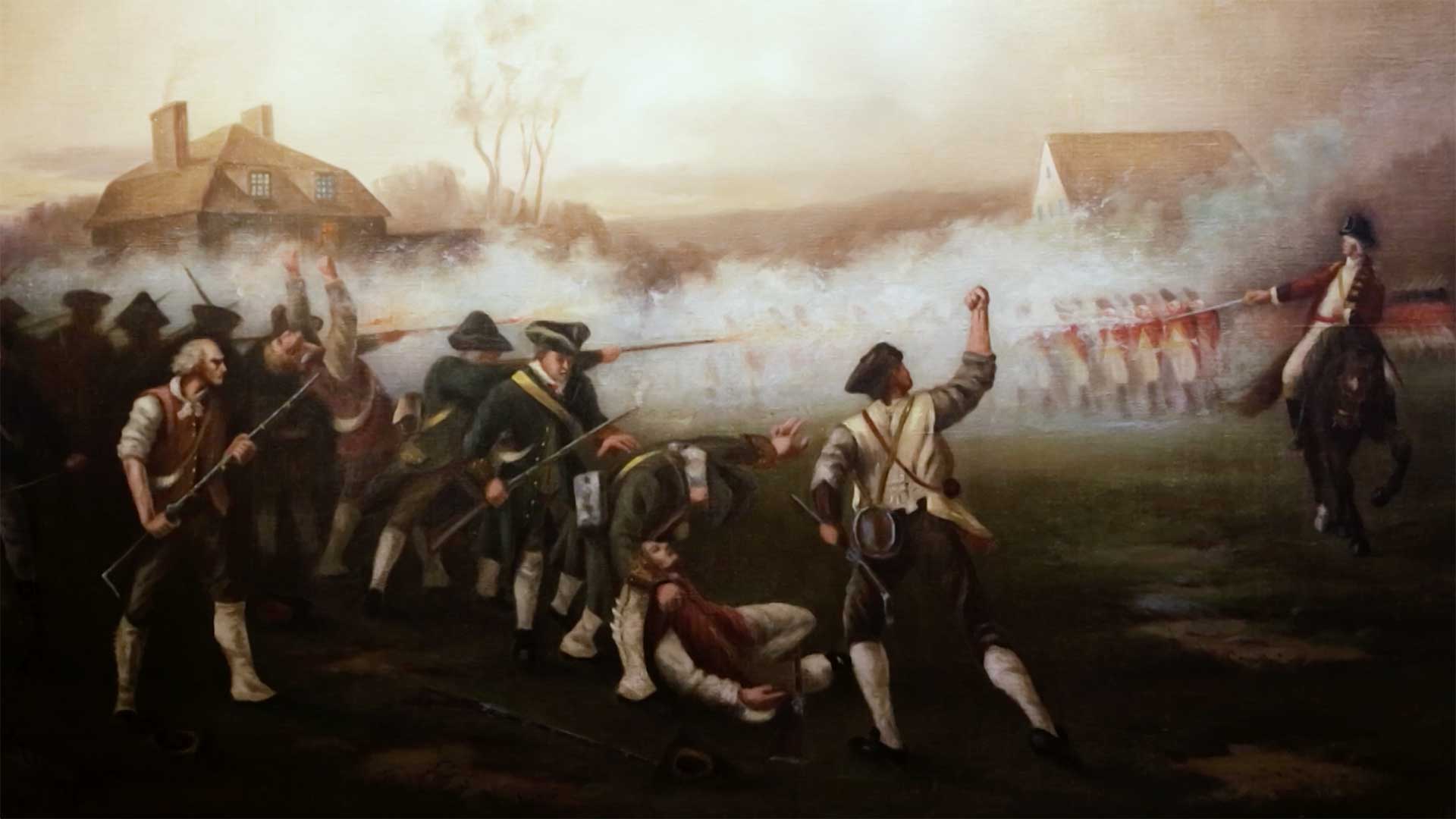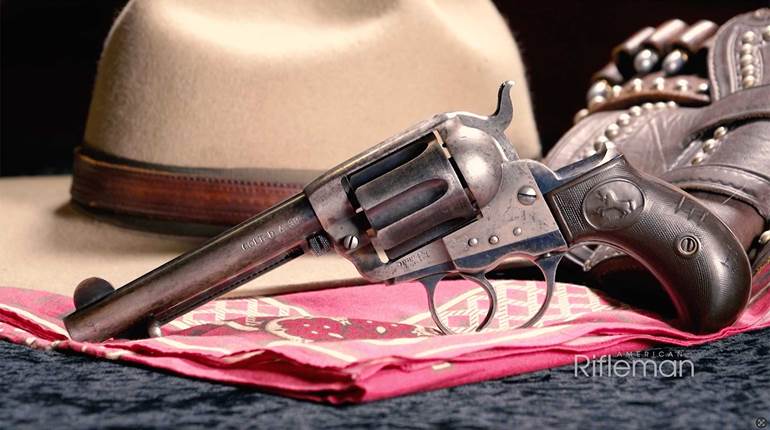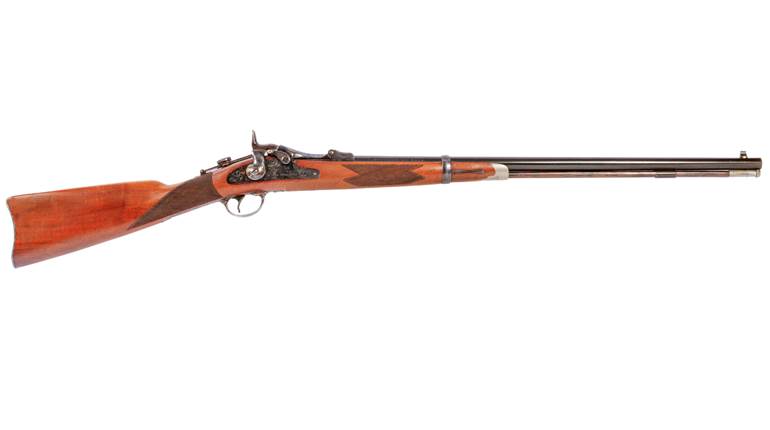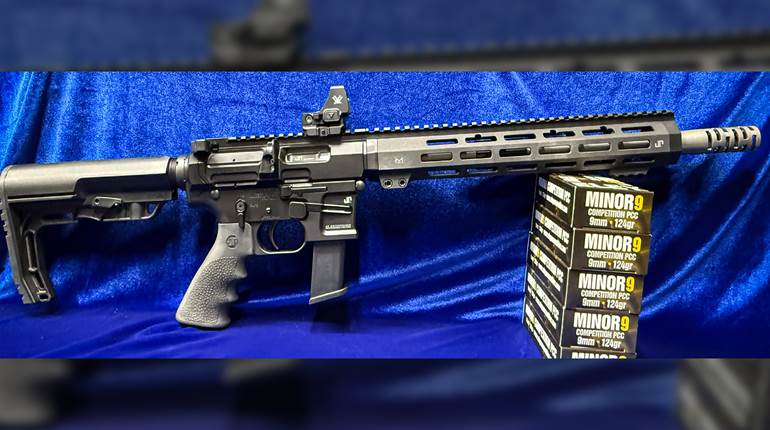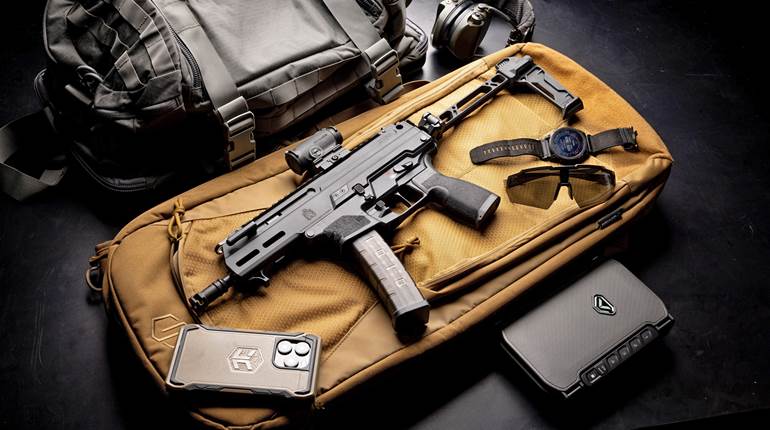
“It was said in the First World War that the French fought for their country, the British fought for freedom of the seas, and the Americans fought for souvenirs.” —Margaret Truman
Over the years, Margaret Truman's quote has been adapted, misremembered, re-imagined and frequently misapplied. Proven uncompromisingly brave and effective in two world wars and multiple smaller conflicts around the globe, the heroic efforts of America's combat forces should never be reduced to a punchline. But when the fighting was done, American fighting men certainly had a great enthusiasm for war trophies. After all, to the victor go the spoils.
During World War II, there was an unprecedented opportunity for the troops to collect souvenirs on battlefields on almost every continent. Throughout the war, the U.S. military attempted to define the scope of appropriate "war trophies" within the context of prevailing rules of war. Despite the sometimes-uncertain legalities and recognizing the incredible demand for war trophies among U.S. servicemen, America's military leadership settled on regulations for captured enemy firearms to be brought or sent to the United States.
American gun laws varied by state even then, and customs officials would be faced with a massive number of captured Axis firearms of every description arriving in the U.S. Another important consideration, particularly from the perspective of America's military planners, was the intelligence value of the trophies the troops picked up in the field. In the end, rampant souvenir hunting was strongly discouraged, and troops were encouraged to turn in any enemy ordnance they found, just as they found it. In their exuberance to secure a memento, particularly one they could carry, these orders were rarely followed.
 An original certificate from the late war/early postwar period. Courtesy of author’s collection.
An original certificate from the late war/early postwar period. Courtesy of author’s collection.
Working with the American Rifleman editors, I've collected a group of official military regulations on claiming war trophies (particularly firearms), along with several appeals from U.S. military intelligence to preserve enemy weapons found or captured.
Defining "War Trophies"
One significant War Department document from the end of August 1944 defined acceptable "war trophies," and outlined how they could be returned, legally, to the United States.
War Department Circular Number 353
August 31, 1944
War Trophy:
In order to improve the morale of the forces in the theatres of operations, the retention of war trophies by military personnel and merchant seamen and other civilians serving with the United States Army overseas is authorized under the conditions set forth in the following instructions. Retention by individuals of captured equipment as war trophies in accordance with the instructions contained herein is considered to be for the service of the United States and not in violation of the 79th Article of War.
The following items are prohibited:
-
- These will not be removed from captured equipment except by authorized military personnel.
- Items which contain any explosives.
- Items of which the value as trophies, as determined by the theatre commander, is outweighed by their usefulness in the service or for research or training purposes in the theatres of operations or elsewhere, or by their value as critical scrap material.
When military personnel returning to the United States bring in trophies not prohibited, each person must have a certificate in duplicate, signed by his superior officer, stating that the bearer is officially authorized by the theatre commander, under the provisions of this circular, to retain as his personal property the articles listed on the certificate. The signed certificate will be taken up by the Customs Bureau; the original will be retained by the bearer.
Military personnel in the theatres of operations may be permitted to mail like articles to the United States, except that mailing of firearms capable of being concealed on the person is prohibited. Parts of firearms mailed in circumvention of this prohibition are subject to confiscation by postal authorities.
Civilians were not allowed to receive certificates to bring or mail home any captured enemy firearms. Unauthorized trophies, seized by the customs bureau, were to be released as follows:
-
- Enemy Ordnance items to Aberdeen, Maryland Ordnance Depot or the Ogden, Utah Ordnance Depot—whichever was closer.
- Enemy naval materials would be disposed of as directed by the US Navy.
- Enemy aeronautical materials would be shipped to Wright Field, Dayton, Ohio
 A 9th Air Force officer shows off a P08 Luger pistol—possibly the most popular war trophy of the war. Photo courtesy of National Archives and Records Administration (NARA).
A 9th Air Force officer shows off a P08 Luger pistol—possibly the most popular war trophy of the war. Photo courtesy of National Archives and Records Administration (NARA).
Official Objections To GI Souvenir Hunting
American troops' desire for war trophies was so great, it became a problem for U.S. military intelligence. New enemy weapons, or important modifications to existing arms were going unrecorded and untested because they were often grabbed up by GIs and taken away from the battlefield. A U.S. Intelligence Bulletin, dated October 1943, details the problems associated with souvenir hunting:
"Souvenir hunting—a practice which is frowned upon, even in peacetime, by many straight-thinking Americans—continues to cause needless loss of lives and injuries to U.S. soldiers in the various combat areas.
Reports from commanding officers and intelligence personnel about the fighting on Attu Island state that souvenir hunters in our ranks interfered greatly with the prompt collection of intelligence data. These reports cite several instances in which lives were actually lost, or the progress of battle impeded, by soldiers who endangered the lives of comrades, as well as their own, by seeking some useless souvenir.
One observer reports that a soldier found a large pair of Japanese binoculars, which were used by the enemy to spot our planes. The soldier hid the much-needed binoculars, with the thought of picking them up for his private use after the fighting was over. Apparently it did not occur to him that the binoculars were badly needed in spotting Japanese snipers and machine gunners who were killing and wounding our men.
Many of our men apparently removed nameplates from vehicles, picked up optical equipment, and took lots of other items that would greatly have aided intelligence personnel in the combat area.
Where there was no loot of interest to the souvenir hunters, enemy quarters and materiel—useful to us—were sometimes left in utter disorder, and valuable information was destroyed. Our troops ruined foodstuffs and equipment—frequently by slashing through bales and boxes with bayonets—and they burned or damaged tents. In other words, they worked for the Japanese by accomplishing the destruction that the enemy was not given time to complete.
Enemy materiel should be destroyed when the enemy has it, but it should be saved when it is in our hands. No matter how small or insignificant certain small items of enemy property may appear to you, they may be exactly what is needed to supply the missing links to important chains of information. Remember also that the enemy will frequently booby-trap items he figures you will want as souvenirs.
Both Japan and (Germany have often claimed that the efficient operation of their salvage activities as been one of the main factors in successful campaigns of the past. On Attu the Japanese made special efforts to capture our weapons, equipment, food, and cigarettes.
We must seek the enemy’s material from getting ours. A gun captured today may win a battle for us tomorrow. Our technicians must see everything new that is taken from the enemy. They can copy the good points and incorporate them in our own weapons, and they can devise means of countering new enemy weapons.
Remember that:
-Everything has a value in modern warfare.
-Nothing should be wasted or ignored.
-Nothing should be willfully destroyed unless it is in imminent danger of falling into enemy hands.
 A small fortune in small arms: This GI in circa-1945 Germany has a collection that includes a MP38, MP40, MG34 and an MG42 in addition to his standard issue M1 rifle. Photo courtesy of National Archives and Records Administration (NARA).
A small fortune in small arms: This GI in circa-1945 Germany has a collection that includes a MP38, MP40, MG34 and an MG42 in addition to his standard issue M1 rifle. Photo courtesy of National Archives and Records Administration (NARA).
Intelligence Value
As the Allied advance progressed, particularly into Germany, U.S. intelligence teams frequently traveled at the vanguard of American advances, in search of "unspoiled" intel finds, particularly Nazi jet and rocket technology. Advanced or unique firearms, like the StG44 automatic rifle, or the last-ditch Gustloff Volkssturmgewehr VG 1-5, were in high demand by U.S. ordnance intel teams, as well as the GIs themselves. Once the shooting stopped at any given battle site, the race to grab war trophies was on.
The March 1945 edition of Intelligence Bulletin featured an article headline that asked: “What do you know about foreign weapons?” Apparently, the U.S. Army preferred that the troops consider them as potential armament rather than war trophies:
Any material that has been captured by U.S. forces is the property of the U.S. Army. In Italy, and then again in France, Belgium, and Germany, the Nazis attempted to claim that the use of German weapons by Allied troops was illegal.
The Germans, even the German GI, certainly knew better, for the German Army's equipment towards the end of the war resembled an arms museum, with small arms and every other type of weapon culled from every army in Europe. Arms and other material captured in combat have always, throughout history, become the acknowledged property of the conqueror, and may be used as he sees fit.
All that is needed is knowledge. Not only knowledge of what the other man's weapon will do, but the knowledge of how to make it work for you.
 Inter-Allied souvenir sales: An Australian “dealer” offers trophies for sale, including a Type 96 light machine gun. Photo courtesy of author’s collection.
Inter-Allied souvenir sales: An Australian “dealer” offers trophies for sale, including a Type 96 light machine gun. Photo courtesy of author’s collection.
The Business End Of War Trophies
War trophies had great value for American troops of all types. Combat men, at the tip of the spear, never lacked for trophies. But the infantry lacked the ability to carry more than a few items with them as they pressed forward. This began the sales-and-distribution chain of souvenirs, from helmets, uniforms and medals, to pistols, rifles and machine guns. Infantrymen would normally find the gear, and then sell or trade whatever they couldn't keep to the next closest units behind them. Armored/mechanized units often had the largest amounts of captured gear because they had the ability to comfortably carry it—more than one captured pistol or longarm was generally too much extra weight for the ground-pounding infantry.
At each step in the sales chain, the price tended to increase. While the war was still on, until shortly after it ended, prices for captured firearms were at their highest. For a "rear-echelon commando," his chances of finding a Luger or a Nambu pistol, a Mauser or Arisaka rifle were slim, and his chances to tell a great war story to the folks back home of how he got it, real or imagined, were fading fast. Consequently, the time was right to buy now, or forever regret it.
 Actor Cesar Romero served with the U.S. Coast Guard during World War II—here the original “Joker” displays a captured Arisaka rifle that he brought home in late 1944. Photo courtesy of National Archives and Records Administration (NARA).
Actor Cesar Romero served with the U.S. Coast Guard during World War II—here the original “Joker” displays a captured Arisaka rifle that he brought home in late 1944. Photo courtesy of National Archives and Records Administration (NARA).
The U.S. military was not happy about the idea of GIs conducting a lively business in selling captured enemy gear, and this only intensified in the early months postwar, as U.S. troops began occupation duties in Germany, Italy and Japan. In connection with the handling or disposal of captured or abandoned property, the U.S. military quoted the 80th Article of War:
DEALING IN CAPTURED OR ABANDONED PROPERTY.
"Any person subject to military law who buys, sells, trades, or in any way deals in or disposes of captured or abandoned property, whereby he shall receive or expect any profit, benefit, or advantage to himself or to any other person directly or indirectly connected with himself, or who fails whenever such property comes into his possession or custody or within his control to give notice thereof to the proper authority and to turn over such property to the proper authority without delay, shall, on conviction thereof, be punished by fine or imprisonment, or by such other punishment as a court martial, military commission, or other military tribunal may adjudge, or by any or all of said penalties.”
 The trouble with souvenir hunting: GIs examine a Messerschmitt Me 262 jet fighter-bomber found in the closing days of the war in Germany. This example was captured sans engines, but with plenty of 30 mm ammunition for the jet’s MK 108 cannons. Photo courtesy of National Archives and Records Administration (NARA).
The trouble with souvenir hunting: GIs examine a Messerschmitt Me 262 jet fighter-bomber found in the closing days of the war in Germany. This example was captured sans engines, but with plenty of 30 mm ammunition for the jet’s MK 108 cannons. Photo courtesy of National Archives and Records Administration (NARA).
In January 1946, the U.S. occupation forces received orders on the “Control and Distribution of Enemy War Material.” This bulletin was issued to occupation troops in Austria, with similar instructions issued around the globe.
Removal of Enemy War Material of Indigenous Supplies:
-
- Units leaving Austria will not be permitted to retain any Enemy War Material other than war trophies and other items acquired as personal property, as defined in Section W-1825, SAE Instructions.
- It is a command responsibility to ensure that Enemy War Material at present in the hands of United States troops in the form of war trophies does not fall into the hands of unauthorized civilians.
- No captured, requisitioned, or appropriated enemy of civilian material or indigenous supplies, including livestock, will be permanently removed from Austria.
 Stateside Postal inspection and confiscation of contraband—Seattle, September 1945. Visible are two StG44 automatic rifles, part of a Beretta SMG, a Solothurn MP34, and a wide variety of pistols. Photo courtesy of author’s collection.
Stateside Postal inspection and confiscation of contraband—Seattle, September 1945. Visible are two StG44 automatic rifles, part of a Beretta SMG, a Solothurn MP34, and a wide variety of pistols. Photo courtesy of author’s collection.
Eighty Years Later: War Trophies Turned Curios & Relics
It is extremely difficult to calculate how many captured firearms were brought back or sent home by U.S. troops in the World War II era. Lacking a precise count, suffice it to say the number is significant, and enough to create the foundation of “curios and relics” market that collectors covet. The definition of C&R firearms comes from the ATF website:
To be recognized as C&R items, firearms must fall within one of the following categories:
-
- Firearms which were manufactured at least 50 years prior to the current date, but not including replicas of such firearms;
- Firearms which are certified by the curator of a municipal, state, or federal museum which exhibits firearms to be curios or relics of museum interest; and
- Any other firearms which derive a substantial part of their monetary value from the fact that they are novel, rare, bizarre, or because of their association with some historical figure, period, or event.
Monetary value for World War II war trophies is only part of the attraction for modern collectors. The emotional component to these artifacts connects us to our ancestors and shared history. The victors of the Greatest Generation brought their spoils back to the land of the free and the home of the brave. Maybe one sits on your shelf in your safe, waiting for the story of the man who claimed it to be told.
Additional Photography: A USAAF promotion from 1945 admonishing troops to leave captured enemy aircraft untouched. Photo courtesy of author’s collection.
A USAAF promotion from 1945 admonishing troops to leave captured enemy aircraft untouched. Photo courtesy of author’s collection.
 A U.S. GI poses with a captured Nazi flag, helmet and StG44 automatic rifle. Photo courtesy of author's collection.
A U.S. GI poses with a captured Nazi flag, helmet and StG44 automatic rifle. Photo courtesy of author's collection.
 Making a “send-home” box on Okinawa, with an Arisaka rifle standing by to travel to the U.S.A. Photo courtesy of National Archives and Records Administration (NARA).
Making a “send-home” box on Okinawa, with an Arisaka rifle standing by to travel to the U.S.A. Photo courtesy of National Archives and Records Administration (NARA).
 Trophies in the MTO: U.S. airmen pose with trophy Carcano rifles and carbines captured from Italian troops on Sicily. Photo courtesy of National Archives and Records Administration (NARA).
Trophies in the MTO: U.S. airmen pose with trophy Carcano rifles and carbines captured from Italian troops on Sicily. Photo courtesy of National Archives and Records Administration (NARA).
 A nightmare for Mauser rifle collectors: A massive pile of Karabiner 98k parts at the end of the North African campaign. Photo courtesy of National Archives and Records Administration (NARA).
A nightmare for Mauser rifle collectors: A massive pile of Karabiner 98k parts at the end of the North African campaign. Photo courtesy of National Archives and Records Administration (NARA).
 Buy-sell-trade: U.S. GIs in the PTO negotiate over a Japanese Type 14 pistol and an Arisaka rifle. Photo courtesy of National Archives and Records Administration (NARA).
Buy-sell-trade: U.S. GIs in the PTO negotiate over a Japanese Type 14 pistol and an Arisaka rifle. Photo courtesy of National Archives and Records Administration (NARA).
 With the 1st Infantry Division in North Africa: the highly sought-after 9 mm MP40 SMG. Photo courtesy of National Archives and Records Administration (NARA).
With the 1st Infantry Division in North Africa: the highly sought-after 9 mm MP40 SMG. Photo courtesy of National Archives and Records Administration (NARA).












